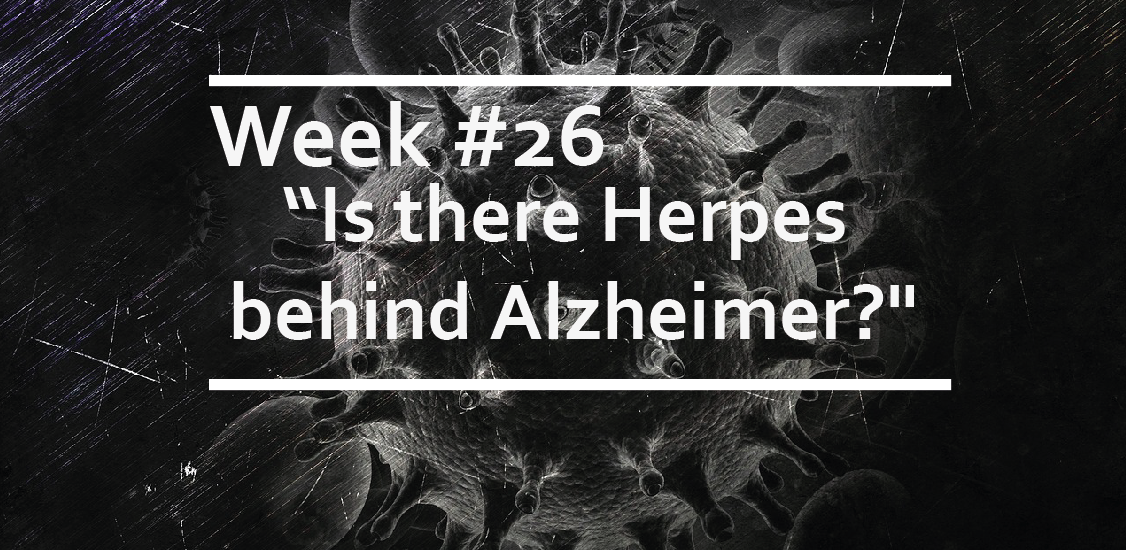Is there Herpes behind Alzheimer?
Serendipity is often responsible for the greatest scientific discoveries. How many blockbuster drugs of the twentieth century happened because someone picked up on the “wrong” information?
Serendipity seems to have contributed when a Mount Sinai-based team (Icahn School of Medicine) found that herpesviruses contribute to the development of Alzheimer’s disease (AD).
Of course, it’s not our intention to suggest that this fascinating discovery was a random stroke of good fortune or dumb luck! Rather, these scientists displayed the creativity and tenacity to move beyond their original hypotheses and pursue a risky and potentially controversial finding. Let’s take a closer look at this absorbing piece of science.
The authors began by examining the transcriptomes of those brain regions that undergo the earliest changes in AD. Their aim was to identify the genes and processes involved in early AD pathogenesis. To do this, the authors compared a healthy control group (no cognitive impairment) with a preclinical AD group (no cognitive impairment at the time of death, but with brains showing the neuropathological criteria for AD).
Examining the transcriptomes of the entorhinal cortex and hippocampus (those regions most associated with neuronal loss in AD), the team used laser-captured neuronal gene expression data to construct probabilistic causal networks of the preclinical AD and healthy control groups. Gene pathway and network analyses were then used to identify the most probable AD driver genes (those genes in which acquired functional mutations are causally linked to disease progression).
Unexpectedly, this approached identified changes suggestive of viral perturbation. These changes included an enrichment of C2H2 zinc finger transcription factor binding motifs (SP1, MAZ, NRF1, and EGFR1) in the promoters of preclinical AD network drivers; C2H2 transcription factors are implicated in a range of pro-viral and anti-viral contexts. G-quadruplex (G4) sequences (sequences that are rich in guanine) were also enriched; G4 sequences are important regulatory features for viral pathogens (e.g., EBV and HSV-1) and are required for efficient RNA replication and translation of viral proteins.
Could viruses be responsible for the network changes seen in AD?
Now on the trail of a viral role in AD, the team next evaluated the role of viral activity in the development and progression of clinical AD.
They started by evaluating the differential viral abundance of 515 viral species in AD and controls brains taken from the Mount Sinai Brain Bank. What they found was startling. Roseola viruses (HHV-6A and HHV-7) were consistently more abundant in the superior temporal gyrus and anterior prefrontal cortex of AD brains versus healthy control brains.
To rule out the possibility that this finding was a quirk of the Mount Sinai Brain Bank, the team set out to replicate their findings in three additional independent brain banks [Dorsolateral prefrontal cortex (DLPFC) samples derived from the Religious Orders Study (n = 300) and Rush Memory and Aging Project (n = 298), and temporal cortex samples derived from the Mayo Temporal Cortex Project (n = 278)]. This allowed the team to examine raw genomic data for large numbers of Alzheimer’s patients and controls.
Armed with this data, the authors reported a consistent increase in HHV-6A and HHV-7 in AD brains. The team also detected an increased abundance of the HSV-1 latency-associated transcript (LAT), which suggested an increased rate of HSV-1 infection in AD. Thus, these data could confirm that the abundance of multiple viruses is increased in AD samples, with prominent roles for the Roseoloviruses HHV-6A and HHV-7.
Moreover, the abundance of viral RNA was found to correlate with clinical AD dementia scores and neuropathologic traits. Importantly, using the Mayo Temporal Cortex Project data, the team found that those viruses most strongly associated with Alzheimer’s (HHV-6A and HHV-7) were not as abundant in the brains of those with non-AD neurodegenerative disorders relative to the AD brains.
How might these viruses be interacting with human genes relevant to Alzheimer’s?
Using a suite of network biology and genomics approaches, the authors detected a role for HHV-6A in contributing to neural loss in AD brain tissue. Also, viral abundance was associated with the expression of AD-risk genes and genes known to regulate the metabolism of the amyloid precursor protein, a key ingredient in AD neuropathology.
Having detected this viral-AD association, it will now be important to determine whether these pathogens play a causative role in the disease or are simply “opportunistic passengers”, taking advantage of the neural deterioration seen during AD.
The results from human brains were further supplemented by mouse studies. HHV 6A is known to deplete miR155, a micro RNA that is an important regulator of the innate and adaptive immune systems. Therefore, the group examined the effect of depleting miR155 in vivo. This revealed increased deposition of amyloid plaques in the miR155-depleted mice, which was coupled with behavioral changes.
This study does not suggest that AD is contagious. However, if viruses or other infections are confirmed to have roles in the pathogenesis of AD, this would have important repercussions for treatment. Could anti-viral or immune therapies help in the treatment of AD, potentially even before the onset of symptoms? Such an approach could have profound benefit.
While the presence of viruses in human brains has long been recognized and past studies have suggested a viral contribution to AD, the work of the Mount Sinai team provides the most compelling evidence to date linking specific viral species with AD and its progression.
Will this study mark the beginning of a paradigm shift in how medicine approaches neurodegenerative disease? We’ll certainly be watching with hope and interest.




